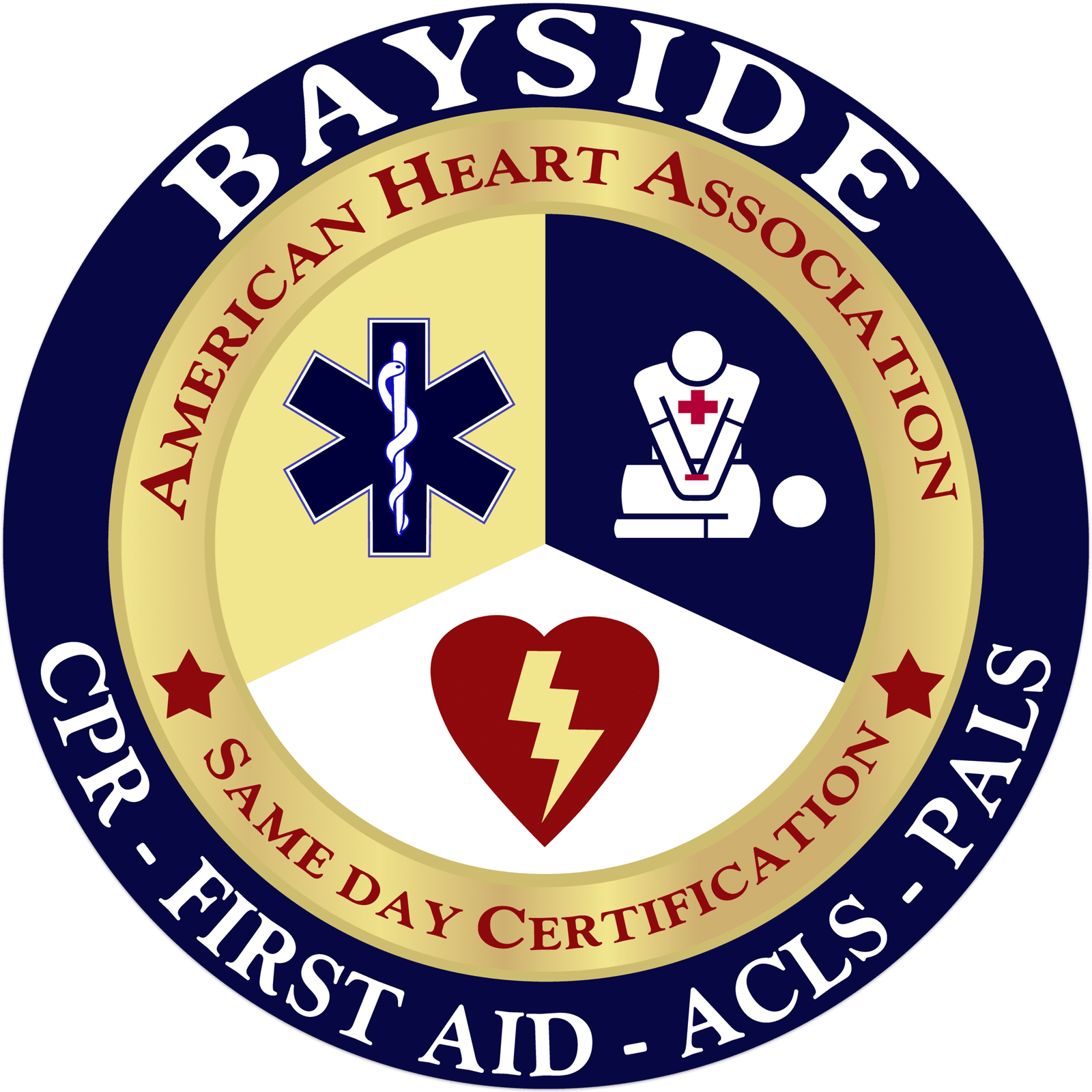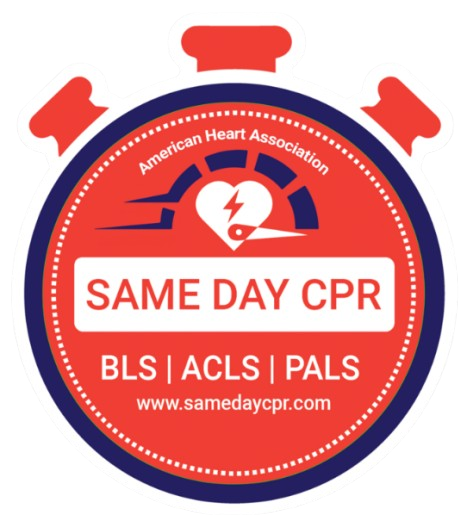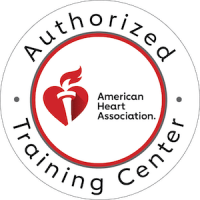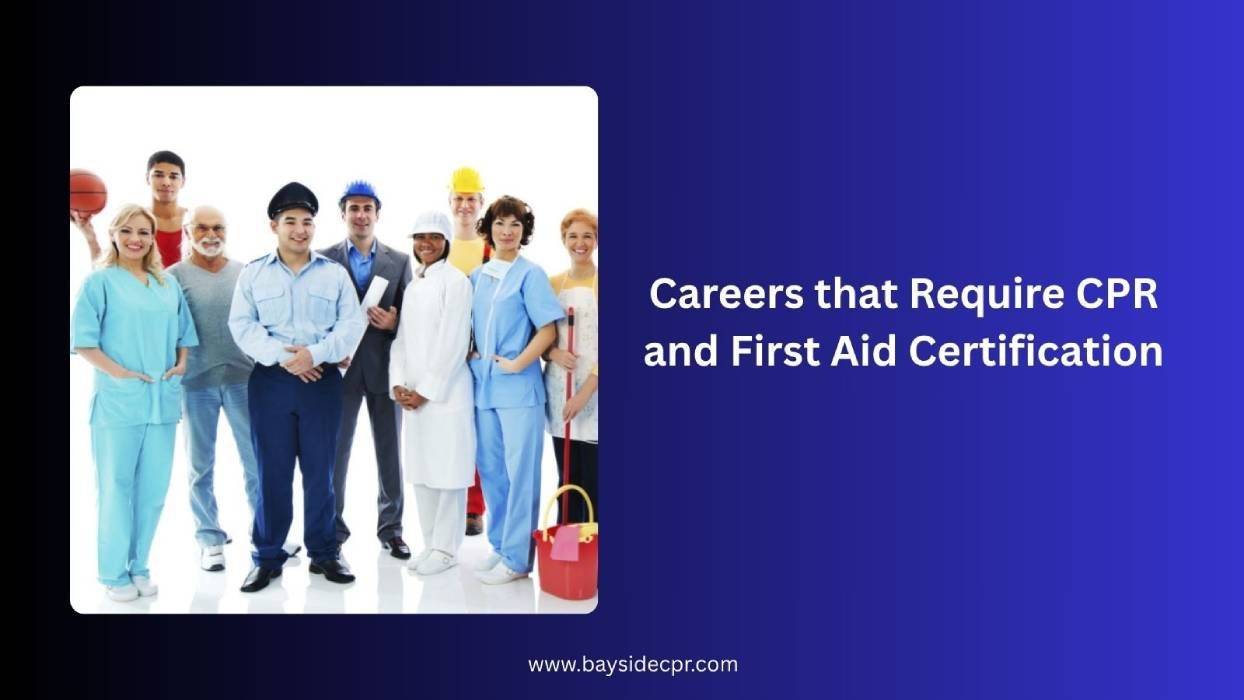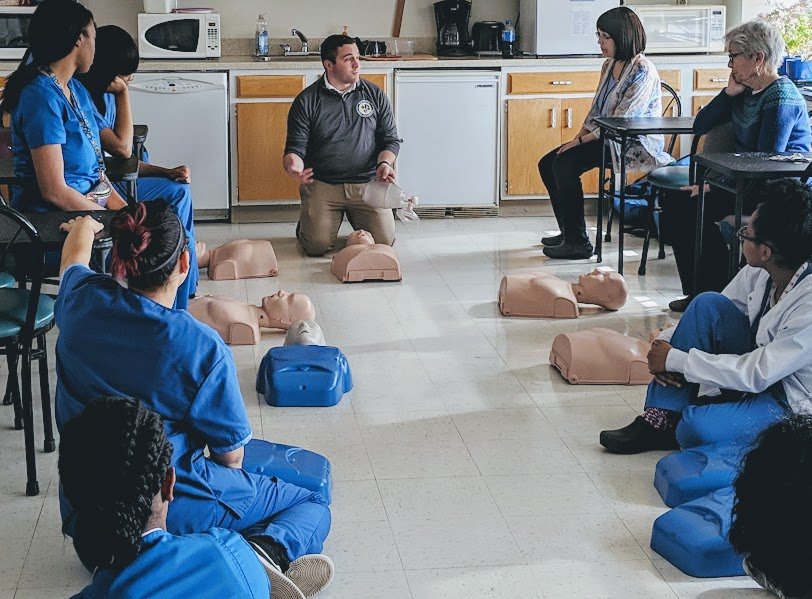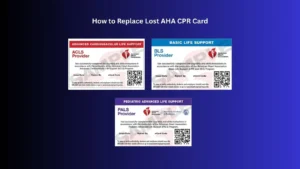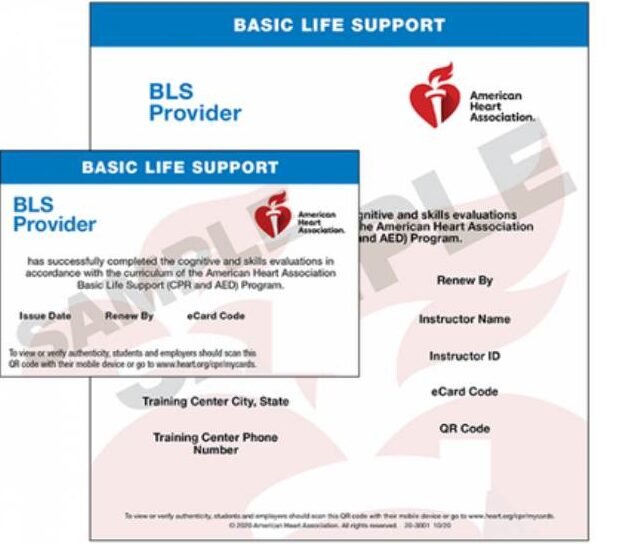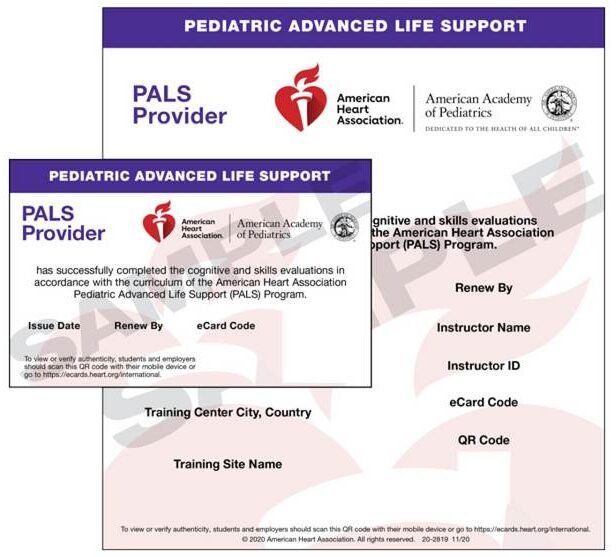CPR and First Aid certification are vital training that proves you know how to respond quickly and effectively in emergencies, like someone choking, bleeding, or losing consciousness. These certifications ensure you’re prepared to provide lifesaving aid when it matters most. Whether you’re pursuing a healthcare career, working with children, or just want to be ready to help in critical moments, getting certified can boost your confidence and safety skills. Accidents and emergencies can happen to anyone at any time. There are two types of organizations for CPR Certification. They are: the American Heart Association (AHA) and the American Red Cross (ARC). Curious about which careers require CPR certification? Keep reading, this blog guides you on why it matters and where you might need it most!
Who Is Required To Have CPR Certification In 2025?
In 2025, CPR certification is required for various professionals, including those in healthcare (like doctors, nurses, and EMTs), education (such as teachers and childcare workers), fitness (including personal trainers and coaches), public safety (like police officers and firefighters), and other emergency-vulnerable roles like flight attendants, lifeguards, and construction workers. 15 careers that require CPR and First Aid Certification. They are listed below:
1. Healthcare Professional
Healthcare professionals need CPR and First Aid certification because it prepares them with the essential skills to respond quickly and effectively in emergencies. When seconds count, knowing how to perform CPR or deliver first aid can make all the difference in saving a life. It also ensures they’re prepared to handle unexpected conditions confidently, creating a safer environment for everyone they care for.
2. Firefighter
Firefighters need CPR and First Aid certification because they often arrive first at emergency scenes where lives are at risk. In an emergency period, people might be scared, panic. The circumstances might look so dangerous, pitiful, and vulnerable. By being trained in these skills, firefighters can provide primary assistance to injured people, clear the way for medical teams, and help stabilize patients until additional help arrives. It’s all about being prepared to act swiftly and confidently in life-threatening situations.
3. Athletic Coaches/Trainers
Athletic coaches or trainers need CPR and First Aid certification because they work closely with athletes, often in physically demanding environments where injuries can happen suddenly. Players became more energetic, aggressive on the field while playing games: soccer, football, basketball. They might face sudden cardiac arrest or heart attack, breathing problems, fractures, and so on. Being trained in these skills allows coaches or trainers to quickly assist with injuries, prevent worsening conditions, and even save lives if serious emergencies occur. It helps them create a safer space for athletes to perform and thrive. The role of CPR in sports is very crucial.
4. Nurse & Nursing Assistant
Nurses and nursing assistants need CPR and First Aid certification because they are on the front lines of patient care. They are often the first to respond to emergencies, provide immediate treatment, and support patient recovery. Having these skills ensures they can act quickly to protect lives, stabilize patients, and deliver safe, effective care in critical moments.
5. Electrician
Electricians need CPR and First Aid certification because accidents and emergencies can happen anywhere on the job, especially when working with electrical systems; they might get an electrical shock, which is very dangerous and scary. Being trained in these skills allows them to respond effectively if someone gets hurt, providing immediate first aid and potentially saving a life. It also helps them stay prepared for unexpected emergencies while working in risky environments.
6. Flight Attendant or Cabin Crew
Flight attendants or cabin crew need CPR and First Aid certification because they are the first responders on a flight, where quick action can be crucial in emergencies. Whether it’s a passenger, other flight attendants, or a pilot having a medical emergency or an accident onboard, their training helps them provide immediate assistance, comfort, and potentially save lives until professional medical help can take over. It’s all about ensuring that passenger or crew members are in tight situations where additional help can’t be reached.
7. Teacher & School Staffs
Teachers and school staff need CPR and First Aid certification because they spend most of the day with students, and emergencies can happen anytime, like injuries or sudden health issues like cardiac arrest or heart attack. Most of the accidents that happen in school are when students run, play here and there, with friends during break time. Being trained allows teachers to respond quickly, provide immediate care, and help keep students safe until professional help arrives. It’s a way to create a safer environment for everyone in the school.
8. Social Workers & Volunteers
Social workers and volunteers need CPR and First Aid certification because they often work in environments like rural areas where they might encounter people in crisis or with health emergencies. Where there is no access to proper medical facilities, small communities, and an illiterate population. Being trained in these skills helps social workers and volunteers respond promptly, provide immediate support, and potentially save lives. It allows them to offer effective help when every second counts, making their care even more impactful.
9. Life Guards
Life guards need CPR and First Aid certification because their primary role is to ensure swimmer safety and respond quickly to emergencies in aquatic environments. These skills enable them to provide immediate rescue, assist injured or distressed swimmers who are drowning, and potentially save lives in life-threatening situations. It’s essential for their safety and the safety of others they protect.
10. Army & Police Officers
Army and police officers need CPR and First Aid certification because they are often first responders in emergencies, accidents, and sensitive incidents. Their training enables them to provide immediate aid, stabilize injured individuals, and save lives in high-pressure situations, whether on duty or during disaster response. It enhances their readiness to handle diverse emergencies effectively.
11. Tourist Guide
Tourist guides need CPR and First Aid certification because they often work in outdoor or remote areas where immediate medical help might not be readily available. Being trained allows guides to respond quickly to injuries or health emergencies of tourists, ensuring safety and providing crucial first aid until professional help arrives. It helps them be prepared for unexpected situations during their tours.
12. Security Guards
Security guards need CPR and First Aid certification because they are often the first to respond in emergencies, such as accidents, medical issues, or security incidents. Their training helps them provide immediate assistance, stabilize injuries, and potentially save lives while waiting for emergency services. It enhances their capability to handle critical situations confidently and effectively.
13. Babysitter or Nanny
Babysitters or nannies need CPR and First Aid certification because they are responsible for children’s safety. In case of accidents or sudden health issues, their quick response can be lifesaving. Being prepared ensures they can provide immediate help, ease the child, and prevent further injury until experienced medical assistance arrives.
14. Jail & Prison Staff
Jail and prison staff need CPR and First Aid certification because they often oversee custodial environments where emergencies, medical issues, or violence can occur. Being trained allows them to respond swiftly to inmate injuries, medical crises, or unrest, helping to ensure safety and provide primary care until professional medical help arrives.
15. Gym Trainer & Staff
Gym instructors and personal trainers should obtain CPR and First Aid certification because they operate in environments where injuries, medical emergencies, or health issues can occur during exercise or training sessions. High-intensity workouts can increase heart rate, blood pressure, and adrenaline levels, potentially triggering a heart attack. CPR & First Aid training allows trainers to respond quickly, provide first aid, and potentially save lives, ensuring a safe workout environment for clients and staff. Around 91% of sudden cardiac arrests during exercise occur in men, according to a study by Cedars-Sinai.
Why is CPR & First Aid important in these careers
- CPR and First Aid skills can save lives in crises, making you a crucial part of any team.
- Knowing how to act quickly can prevent minor injuries from becoming serious issues.
- These skills boost your confidence to handle unexpected health emergencies at work or in daily life.
- Being trained shows your dedication to safety and caring for others around you.
- Many workplaces value first aid and CPR certification, which can even open up more job opportunities.
- Learning First Aid and CPR helps create a safer environment, whether you’re at work, home, or out in the community.
How to put CPR & First Aid on a resume
To effectively put CPR & First Aid on your resume, follow these steps:
- Create a dedicated skills or certifications section, list it clearly to make sure employers see it upfront.
- Use a clear heading, Such as “Certifications” or “Emergency Skills.
- Include the full name of the certification, for example, CPR & First Aid Certified.
- Mention the issuing organization, like the AHA or the ARC.
- Add the date of certification, including the month and year you earned it.
- Specify your proficiency level or expiry, if relevant. Note: you’re certified for a specific period, or if you’re re-certified regularly.
Enhance your career with CPR and First Aid Certification
In summary, CPR and First Aid training are crucial skills across many careers because they enable you to respond quickly and effectively in an emergency. Whether you’re a healthcare professional, firefighter, nurse, electrician, or gym trainer, being certified in CPR and First Aid can make a life-saving difference. These skills allow you to act confidently when someone is having a cardiac arrest, bleeding, or other sudden health issues, potentially saving lives before emergency services arrive. No matter what career path you choose, having CPR and First Aid certification shows you’re prepared to handle unexpected situations, demonstrating responsibility and care. It’s an essential part of being ready to protect others and provide immediate help when it’s needed most.
Ready to take your career to the next level? Bayside CPR makes it easy and accessible to earn essential certifications like ACLS, BLS, PALS, and CPR & First Aid. Our hands-on courses are designed to equip you with vital skills that could make all the difference in an emergency. Whether you’re looking to boost your professional credentials or just want to be prepared to help others, we’re here to guide you every step of the way. Enhance your career today with our comprehensive training programs!
